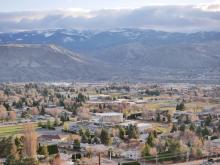Grays Harbor PUD Connects Schools, Creates Potential, in Washington
Grays Harbor County Public Utility District (PUD) in Washington state has just finished a fiber optic network to local schools and a local industrial park. The county has been strapped for Internet access, and this network is the first step in developing better connectivity to many of the homes and businesses along the route. Elected officials are also exploring new ways to encourage last mile connectivity.
The Need for Internet Access
The options for high-speed Internet access are limited in Grays Harbor County, Washington. About 74,000 people live in there, and about 78 percent of the population reports having some form of Internet access at home, but it's likely those that live in the rural areas don't have access to "broadband" as defined as the Federal Communications Commission (FCC).
The FCC defines broadband as 25 Mbps (download) and 3 Mbps (upload) that meets certain other technical standards. While satellite Internet access continues to improve, satellite connectivity is still expensive, unreliable, and describing it as "broadband" is a stretch.
The FCC's data paints the situation in Grays Harbor County as similar to other areas where those living in rural areas have poor or no Internet access and many within small- or medium-sized towns have little or no choice. About 13 percent of the population have no access to broadband, and another 53 percent live under broadband monopoly. This means there is only a single provider for those people. Approximately 27 percent have a choice, but it is limited to two providers and typically between competing technologies, such as cable and DSL.




 “That was us,” says DCCN Coordinator Ben Carter. “They were telling us that they weren’t going to roll broadband out … Obviously, the business decision makes itself.” Rather than bringing a new service to a place where the largest population center was only around 12,000 in 2000, corporate Internet access companies were aiming for large cities such as Seattle and Portland.
“That was us,” says DCCN Coordinator Ben Carter. “They were telling us that they weren’t going to roll broadband out … Obviously, the business decision makes itself.” Rather than bringing a new service to a place where the largest population center was only around 12,000 in 2000, corporate Internet access companies were aiming for large cities such as Seattle and Portland.